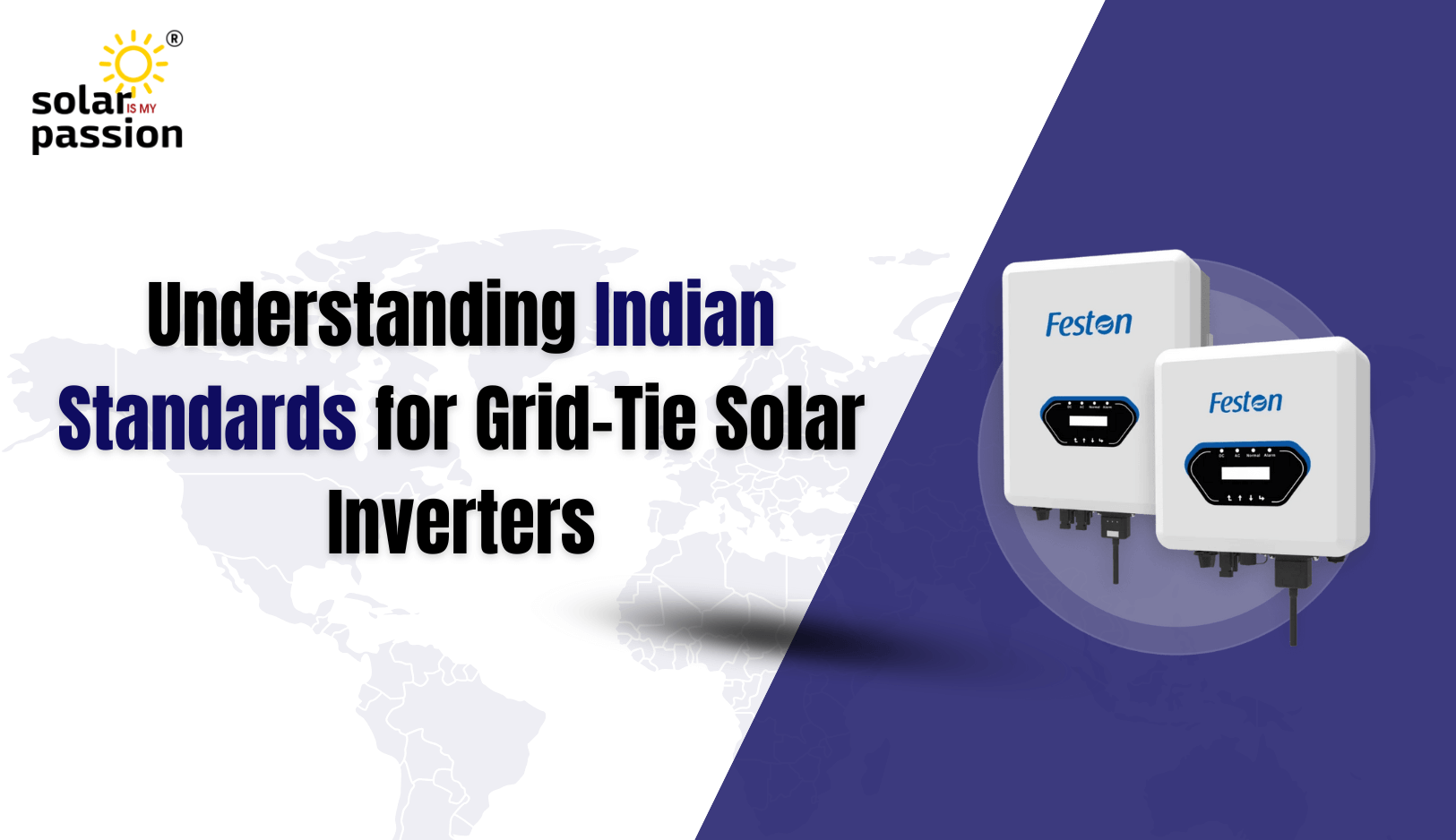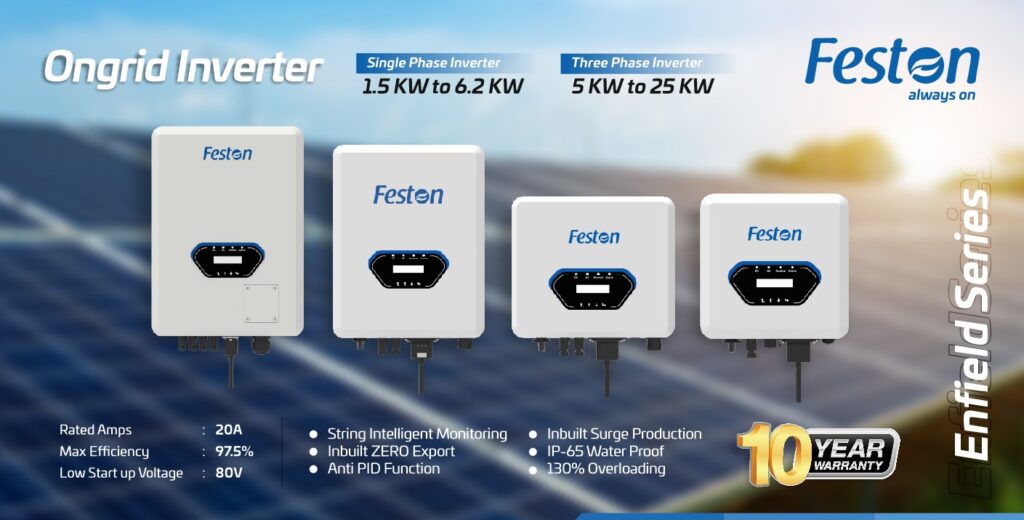A Beginner-Friendly Guide to MNRE’s Draft Guidelines
With the rising adoption of solar energy across India, grid-tied solar inverters play a vital role in ensuring that solar power is safely and efficiently integrated with our electricity grid. To ensure high quality, safety, and grid stability, the Ministry of New and Renewable Energy (MNRE) has drafted a comprehensive set of technical requirements for grid-tie inverters.
If you’re a solar installer, EPC player, or enthusiast, this blog will help you understand what’s inside these standards in a simple way.
What is a Grid-Tie Inverter?

A grid-tie inverter converts DC electricity from solar panels into AC electricity that can be directly used or fed into the utility grid. It must operate safely and in sync with the grid at all times.
Why Do We Need Standards?
To ensure:
- Safety of users and utility workers
- Efficient performance of inverters
- Protection against grid failures or faults
- Harmonization with Indian and global (IEC) standards
What Tests Should Inverters Pass?
MNRE outlines several Type Tests and Routine Tests. Let’s break them down:
1. Grid Interconnection Tests
| Test | What It Checks | Limits |
|---|---|---|
| DC Injection | Leakage of DC current into AC grid | ≤ 0.5% of rated current |
| Harmonics (THD) | Distortion in current waveform | Total THD ≤ 5% |
| Flicker | Light fluctuation due to voltage change | As per IEC standards |
| Abnormal Voltage/Frequency | Auto trip in case of unsafe grid | Must disconnect quickly |
| Utility Recovery | Reconnect after safe grid returns | Delay: 20 to 300 sec |
| Islanding Protection | Auto shutdown if grid fails | Must trip within 2 seconds |
2. Grid Stability Features (Grid Management)
🔌 Ride Through Capability
Inverter must stay connected during short-term:
- Voltage Dips (LVRT)
- Voltage Surges (HVRT)
Active Power Control
- Reduce output when frequency rises (to avoid overloading grid)
- Accept external power limit commands
Reactive Power & Power Factor
- Maintain power factor between 0.8 lead/lag
- Provide up to 60% of rated power as reactive power
3. Safety & Environmental Tests
Safety (IS 16221 Part 2)
Protection from:
- Electric shock
- Fire hazards
- Mechanical failures
Environmental Conditions:
- Cold: -25°C for 16 hours
- Heat: +60°C for 16 hours
- Humidity: 50°C @ 93% RH for 48 hours
(All while inverter remains operational)
4. Efficiency Testing
Inverter’s performance is measured using weighted efficiency:
| Load Level | Weight |
|---|---|
| 10% | 6% |
| 20% | 13% |
| 30% | 10% |
| 50% | 48% |
| 100% | 20% |
Note: 75% load is not considered. Weighting can be updated for Indian sunlight conditions.
5. Routine Factory Tests
Every unit produced must be tested for:
- Voltage/frequency protection
- Utility recovery response
- Settings verification
Which Standards Apply?
Key Indian/IEC standards referenced:
- IS 16221-2 – Safety
- IS 16169 / IEC 62116 – Anti-islanding
- IEC 61683 – Efficiency
- IEC 61000 series – Harmonics & EMC
- IEC 60068 series – Environmental testing
Who Created These Standards?
Experts from MNRE, CPRI, IITs, industry leaders like SMA, Schneider, UL, BHEL, and Sungrow collaborated to prepare this draft.
Download the PDF of Inverter Standards by MNRE, click here to download.



